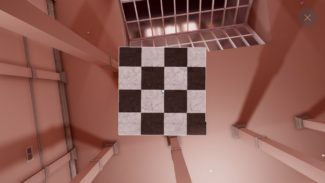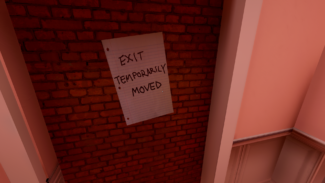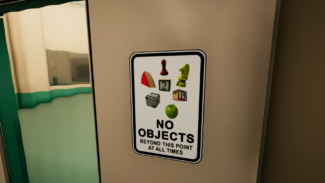The Case of the Golden Idol
LQ: 9.85
Recommended Age: 12+
Skills Used: Focus, Working Memory, Mathematics, Reading

Nintendo Switch Playstation 4 Xbox One Xbox Series X/S PC Steam
 Superliminal is a puzzle game that uses optics and forced perspective to create increasingly difficult challenges for the player to solve. The player uses their mouse or controller to interact with objects in the environment in myriad ways to solve puzzles and make it through to the next level. The game is played from the first perspective, placing the player in the role of the main character.
Superliminal is a puzzle game that uses optics and forced perspective to create increasingly difficult challenges for the player to solve. The player uses their mouse or controller to interact with objects in the environment in myriad ways to solve puzzles and make it through to the next level. The game is played from the first perspective, placing the player in the role of the main character.
At the beginning of the game, you are a test subject at the Pierce Institute of Technology where they are working on something called SomnaSculpt. You enter into your dreams, where you are told that you will be woken up at a certain point. The only problem is that you do not wake up when you are supposed to. The player needs to make their way through several layers of dreams in order to wake up again.
 Players can pick up and manipulate objects in the environment using forced perspective. For example, picking up a small chess piece and moving it around so that it appears larger to your eyes will actually change the size of the piece in the game. The game encourages you to look at the objects in the environment and figure out how to manipulate them in order to solve the puzzles and move to the next dream layer.
Players can pick up and manipulate objects in the environment using forced perspective. For example, picking up a small chess piece and moving it around so that it appears larger to your eyes will actually change the size of the piece in the game. The game encourages you to look at the objects in the environment and figure out how to manipulate them in order to solve the puzzles and move to the next dream layer.
Flexibility: Adapting and adjusting to changing conditions and expectations.
 In order to solve the puzzles within the game, the player needs to use their flexibility skills and look at their surroundings in various ways. This game is all about using perspective to change the reality around you so if the player is not flexible and tries to make it through the game without exploring the space around them, they may find the puzzles very difficult or even impossible to complete.
In order to solve the puzzles within the game, the player needs to use their flexibility skills and look at their surroundings in various ways. This game is all about using perspective to change the reality around you so if the player is not flexible and tries to make it through the game without exploring the space around them, they may find the puzzles very difficult or even impossible to complete.
Self-Control: Managing our actions, feelings and behaviors.
 Players also need to use their self-control skills to not become too frustrated with the game. If there is a particular puzzle or section that is difficult, the player needs to recognize when they are getting frustrated and take a break from the game to go do something else, preferably non-screen related. Coming back to the puzzle with fresh eyes after a break can occasionally help the player realize what they were missing. Also, it is a good way to continue enjoying the game even when it is hard.
Players also need to use their self-control skills to not become too frustrated with the game. If there is a particular puzzle or section that is difficult, the player needs to recognize when they are getting frustrated and take a break from the game to go do something else, preferably non-screen related. Coming back to the puzzle with fresh eyes after a break can occasionally help the player realize what they were missing. Also, it is a good way to continue enjoying the game even when it is hard.
All membership plans come with full access to our entire suite of tools learning guides, and resources. Here are a few of the ones we think you’ll like the most: